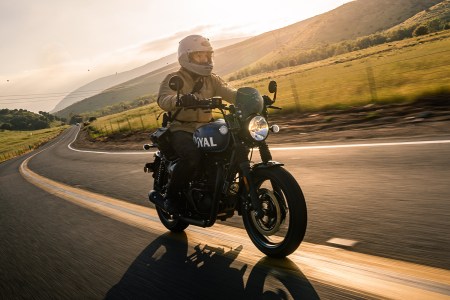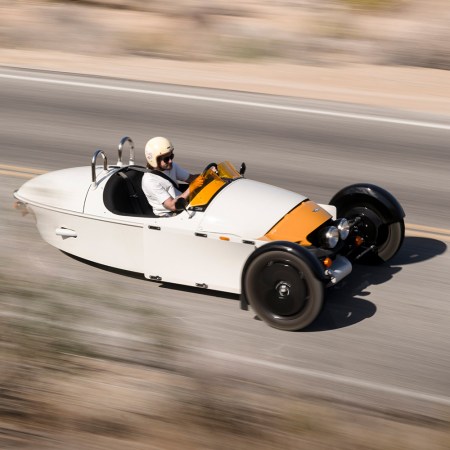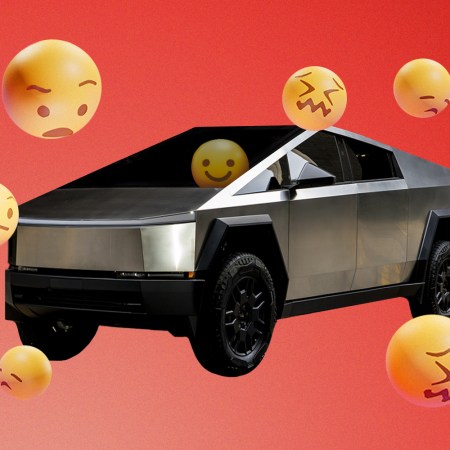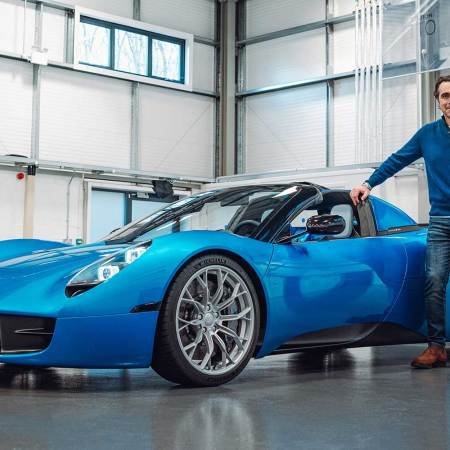Marko Lehtimaki might look like your standard biker, what with his black T-shirt, shaved head and goatee, but his background is in software. Over his lucrative career, he’s launched around 15 software companies, selling some to giants like Germany’s SAP. So perhaps it’s no surprise that when he thinks of products that are comparable to the electric motorcycles made by Verge, the Finnish-Estonian company he co-founded and which opened its first two U.S. stores this summer in California, his mind doesn’t go to Harley-Davidson, but to the iPod.
What he means is that the TS Pro and TS Ultra, the company’s first two motorcycles, are similarly self-contained and user-friendly, sleek and clean, literally and aesthetically. The novel design led one recent customer, a Silicon Valley exec, to call Verge “the Apple of motorcycles.”
So far, Verge’s radically new approach to motorcycle design seems to be drawing interest outside the relatively small world of bikers: around 30% of people who have applied for a test ride of the TS models so far don’t even have a motorcycle license yet. “We seem to be getting a lot of interest from Silicon Valley tech nerds who love the idea of riding a motorcycle but don’t want to get involved with anything mechanical,” Lehtimaki laughs.
But that’s not the only way in which this young startup is looking to upend the motorcycle industry’s conventions, a goal largely attributed to the fact that none of Verge’s six founders come from the automotive industry.
“That has really given us an edge,” Lehtimaki tells InsideHook. “I think a lot of the big players out there are allergic to risk. Their rules get established over time — this has been proven to work, you can’t do this, and so on — and that creates a whole ecosystem of solidified ways of thinking that is almost impossible to break from the inside. It’s why NASA, for example, looks outside of the space industry for ideas, even though you’d expect it to already know how to build rockets.”
Royal Enfield Makes Its Mark in the Heart of Harley Country
After setting up shop in Milwaukee, the historic English bike builder has been spreading the gospel of a purist riding experienceThe big idea for Verge Motorcycles? To build the motor directly into a modular rear wheel unit. They made that fundamental design change because, after testing electric motorcycles that are currently available, the team found them top-heavy and unwieldy due to the battery being mounted above the motor, which in turn meant the battery was small and the range low (their bikes, on the other hand, offer up to 233 miles of range).
“Unlike a car, a motorcycle is such a small package to work with, so you have to innovate,” Lehtimaki argues. Working from first principles — how to employ a much larger battery with a low center of gravity, which would make even a big motorcycle much easier to handle — the obvious solution was to move the motor out of the way. Obvious, but not easy.
“The hardest part is making the first version,” he says. “Eight times we went back to the drawing board and started again from scratch, rethought all of the materials. But it was a process of continuous iteration, and of intuition, that kept us going well beyond the point where I think a lot of bigger companies would have given up.”

What allowed Verge to keep going was the fact that, since unveiling its first test prototypes five years ago, almost every component in their motorcycles has been developed and built in-house, battery included.
“The challenge of vertical integration is that operations become much more complicated, there are more moving parts. But the benefits are much greater,” Lehtimaki contends. “It allows you to ask what you want to achieve rather than looking at the available components and asking, ‘What can we build out of these?’ You’re in much greater control.”
No wonder Verge found a spot on Fast Company’s list of the World’s Most Innovative Companies this year. But Lehtimaki doesn’t seem one to blow his own trumpet. He thinks so much of what Verge has done has been obvious. Much as modern cars are replete with safety systems, the TS Ultra, for example, also comes with six cameras and high-resolution front and rear radars.
“Again, you can only imagine these big companies asking if [safety systems] are really necessary, is there a business case for them, what do the analysts say, and then just deciding against it,” he says. “A lot of the time, all you really need to outwit the competition is common sense.”
The loud, greasy kind of motorcycles that constantly need your attention, the kinds we’ve got used to — they’re dinosaurs. They won’t exist in 10 years’ time.
– Marko Lehtimaki, co-founder of Verge Motorcycles
There’s even money in it. In conversations with its customers, Verge kept hearing from people who had once been enthusiastic bikers but had an accident and then never rode again. According to Lehtimaki, they’re being persuaded by Verge’s emphasis on safety to get back in the saddle. “It’s surprising to me that nobody had listened to these people before,” he says. Or rather, as he discovered, not that surprising at all: the motorcycle industry is almost entirely a business-to-business one, with manufacturers selling to dealers.
“Dealers may hear this kind of customer feedback, but of course they don’t report it back to the manufacturers,” he says. One of the most important ways Tesla has turned the car industry upside down, Lehtimaki reckons, is by having a direct-to-consumer model, one which has become standard for auto startups that have followed.

Is there any aspect of the motorcycle industry that Verge hasn’t set out to change? Lehtimaki says this is just the beginning: the company plans to launch a series of motorcycles across all the major categories — from sports bikes to tourers — over the next few years; a relatively easy task, he argues, given the modular nature of the engineering behind the TS bikes.
Beyond the bike itself, Verge wants to work on software integrated into its motorcycles that will take the rider on adventures — along the best roads for riding, to the best stopping points — “because the silence of an EV motorcycle is magical and allows you to actually enjoy what’s going on around you,” Lehtimaki says. And, then, he adds, there’s all that bulky, ugly clothing you’re supposed to wear to ride, and the uncomfortable helmets; Verge has already started a study of the potential in nano-tech materials to make better gear, too.
“Of course, the noise that motorcycles make, the smell, the oil, the gear, the necessary maintenance, all of that is why a lot of people like motorcycles. But it’s also why a lot of people don’t,” he says. “We didn’t set out to create the best electric motorcycle, but the best motorcycle, which is why improving the battery performance was so important. It’s been about making the motorcycle appeal to a much wider audience, those people who wouldn’t normally even consider riding a motorcycle.”
Could Verge be pioneering an entirely new vision for the motorcycle? Lehtimaki throws down the gauntlet: “The loud, greasy kind of motorcycles that constantly need your attention, the kinds we’ve got used to — they’re dinosaurs. They won’t exist in 10 years’ time.”
This article was featured in the InsideHook newsletter. Sign up now.
























